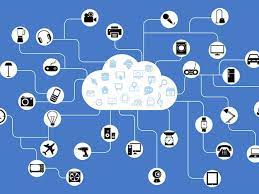Cloud platforms play a crucial role in enabling efficient and scalable data processing for IoT applications. They provide the necessary infrastructure, tools, and services to handle the large volumes of data generated by IoT devices. Here’s an introduction to cloud platforms for IoT data processing:
- Scalable Infrastructure: Cloud platforms offer scalable infrastructure resources, such as computing power, storage, and networking capabilities, to handle the massive amounts of data generated by IoT devices. These resources can be dynamically scaled up or down based on the demand, ensuring efficient processing and storage of IoT data.
- Data Storage and Management: Cloud platforms provide various storage options for IoT data. They offer scalable and durable storage solutions, including object storage, file storage, and databases. Time-series databases, in particular, are commonly used to efficiently store and retrieve time-stamped IoT data. Cloud platforms also provide data management services, such as data partitioning, indexing, and backup, to ensure data integrity and availability.
- Data Processing and Analytics: Cloud platforms offer a wide range of data processing and analytics tools for IoT applications. They provide managed services for real-time stream processing, batch processing, and machine learning. These services enable organizations to perform real-time analytics, complex event processing, data transformations, and advanced analytics on IoT data. Cloud platforms also integrate with popular data processing frameworks like Apache Spark and Apache Flink, allowing seamless execution of data processing tasks.
- Data Integration and Ecosystem: Cloud platforms provide integration capabilities to connect IoT data with other services and systems. They offer APIs, connectors, and pre-built integrations with various data sources, analytics tools, and third-party services. This facilitates easy integration of IoT data with external systems, enabling comprehensive data analysis, visualization, and decision-making.
- Data Storage: Cloud platforms offer various storage options for IoT data. These include object storage, file storage, and database services. Object storage, such as Amazon S3 or Google Cloud Storage, is commonly used for storing large volumes of unstructured IoT data. Relational and NoSQL databases, such as Amazon DynamoDB or Microsoft Azure Cosmos DB, are suitable for structured and semi-structured IoT data.
- Machine Learning and AI: Cloud platforms often integrate machine learning and AI services that can be applied to IoT data. These services offer pre-built models and APIs for tasks like anomaly detection, predictive maintenance, and image or speech recognition. With the power of cloud-based machine learning, organizations can extract valuable insights from IoT data and enable intelligent decision-making.
- Security and Privacy: Cloud platforms prioritize data security and privacy for IoT applications. They implement robust security measures, including data encryption, access controls, authentication mechanisms, and compliance certifications, to protect IoT data. Cloud platforms also enable privacy features to comply with regulations and maintain user confidentiality.
- Device Management and Connectivity: Cloud platforms offer device management services to handle IoT device provisioning, configuration, and monitoring. They provide tools and APIs for device registration, firmware updates, and remote management of IoT devices. Cloud platforms also support various connectivity protocols, such as MQTT, CoAP, or HTTP, to enable seamless communication between IoT devices and the cloud.
- Scalable and Pay-as-You-Go Model: Cloud platforms follow a scalable and pay-as-you-go pricing model. They allow organizations to provision resources as needed, scaling up or down based on demand. This flexibility eliminates the need for upfront infrastructure investments and enables cost optimization by paying only for the resources consumed.
- Integration with Other Services: Cloud platforms offer integration with other services, both within and outside the IoT ecosystem, such as data visualization tools, notification services, or third-party APIs. These integrations enable organizations to create end-to-end solutions that encompass data collection, processing, analysis, and visualization.
By leveraging cloud platforms for IoT data processing, organizations can benefit from the scalability, flexibility, and cost-effectiveness offered by the cloud. They can efficiently process, store, and analyze the vast amounts of data generated by IoT devices, enabling real-time insights, predictive analytics, and intelligent decision-making. Cloud platforms provide a foundation for building robust and scalable IoT applications across various industries, including smart cities, industrial automation, healthcare, and more.
